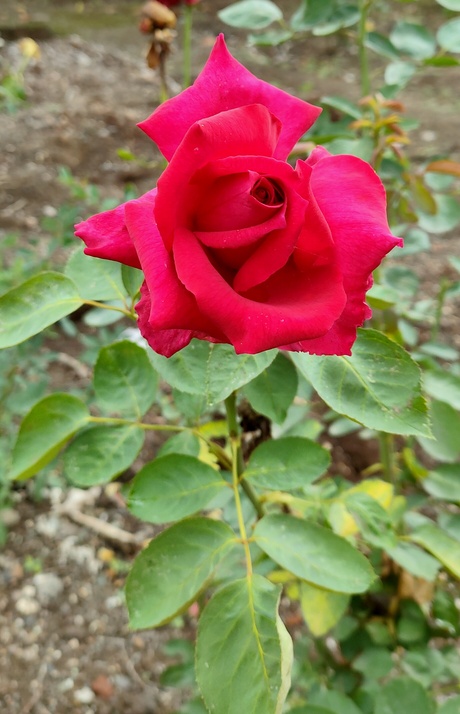
Scientific Name : Rosa indica L.
Category : Angiosperms
Status : Alive
Habit : A shrub with stem woody, aerial, erect or climbing, branched, solid, prickly and green. Leaves : Cauline and ramal, alternate, stipulate, stipules adnate, compound, unipinnate and imparipinnate, petiolate, ovate serrate, acute, unicostate, reticulate. Inflorescence : Solitary or in terminalpairs or sometimes in clusters. Flowers : Ebracteate, pedicellate, complete, actinomorphic, hermaphrodite, epigynous and cyclic. Calyx with sepals 5, gamosepalous, quincuncial, persistent and hairy. Corolla with petals 5 or more, polypetalous, imbricate, rosaceous, variously coloured. Androecium with indefinite stamens, polyandrous, filaments slender and unequal, dithecous, dorsifixed, introrse. Gynoecium with polycarpellary, apocarpous, inferior ovary, enclosed in calyx tube, basal placentation, style short, stigma capitate. Fruit : Etaerio of achenes. Flowering and Fruiting Time : Almost all the year but more during winter season. Significance : It is generally cultivated because of its beautiful flowers. The petals are the sources of rose water, essential oil, pankhuri and gulkand. The essential oil yield by petals are used in perfumery and cosmetics.
Specimen Information
-
Common Name(s):
गुलाब, Rose, Indian Fragrant Rose
-
Synonym(s):
Rosa cymosa Tratt. Rosa cavaleriei H.Lév. Rosa microcarpa Lindl. Rosa pannosa Link
-
Family:
Rosaceae
About Me:
-
Created By:
admin
Botany Department (DVP College, Nimgaon Sawa) -
Created On:
03-09-2022
-
Contact:
Phone: 9960072282
Email: [email protected]
Find Location:
Photo Gallery








